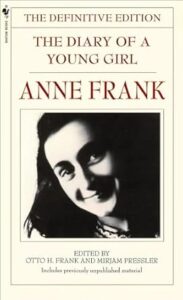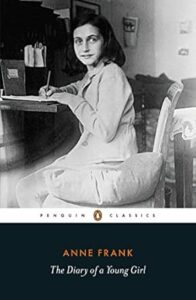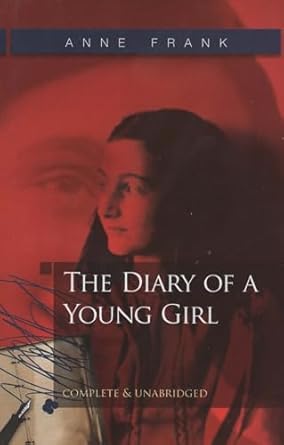Synopsis & Themes
The Diary of Anne Frank is the true story of a young Jewish girl, Anne Frank, who went into hiding with her family during World War II to escape the Nazi persecution of Jews. The diary begins in 1942 when Anne is 13 and follows her life in a hidden annex behind her father’s business in Amsterdam.
For over two years, Anne recorded her thoughts, fears, hopes, and daily life while living in constant danger. Despite the fear, Anne’s writing is full of insight, humor, and hope. Her diary ends in August 1944, when the family was discovered and arrested. Anne later died in the Bergen-Belsen concentration camp, but her words lived on.
The diary explores themes of fear, hope, identity, and the power of the written word. Anne writes not only about the danger of hiding but also about growing up—her thoughts on love, loneliness, and trying to understand who she is. A major theme is the endurance of hope and humanity even in the darkest times.
Anne believed in the goodness of people, despite the horrors happening around her. The diary is also a powerful reminder of the personal cost of war, prejudice, and hatred.
Awards
While The Diary of Anne Frank itself did not win specific literary awards at the time of publication, it has received global recognition as one of the most important books of the 20th century. It has been translated into over 70 languages and read by millions.
The diary was adapted into a Pulitzer Prize–winning play (The Diary of Anne Frank, 1955) and has inspired films, documentaries, and educational programs around the world. The Anne Frank House in Amsterdam is now a museum and an important place of remembrance.
Challenges
Despite its historical importance, The Diary of Anne Frank has been challenged and banned in some schools and libraries. Some objections are due to its descriptions of puberty, sexuality, or “depressing content.” In other cases, people opposed its inclusion because of its emotional impact or claimed that it was inappropriate for young readers.
However, most educators and historians argue that its honesty is what makes it so valuable—it shows real human experience during one of the darkest times in history and helps teach empathy, history, and tolerance.




About the Author
Anne Frank was born on June 12, 1929, in Frankfurt, Germany. Her family moved to the Netherlands to escape Nazi persecution, but when the Nazis occupied the country, they went into hiding. While in the secret annex, Anne kept a diary that captured her thoughts and observations. She hoped to become a writer someday.
Sadly, Anne died in a concentration camp in 1945, just months before it was liberated. Her father, Otto Frank, was the only family member to survive. He later published Anne’s diary in fulfillment of her dream to become an author.
Today, Anne Frank is remembered around the world as a symbol of courage, hope, and the voice of those who could not speak.



